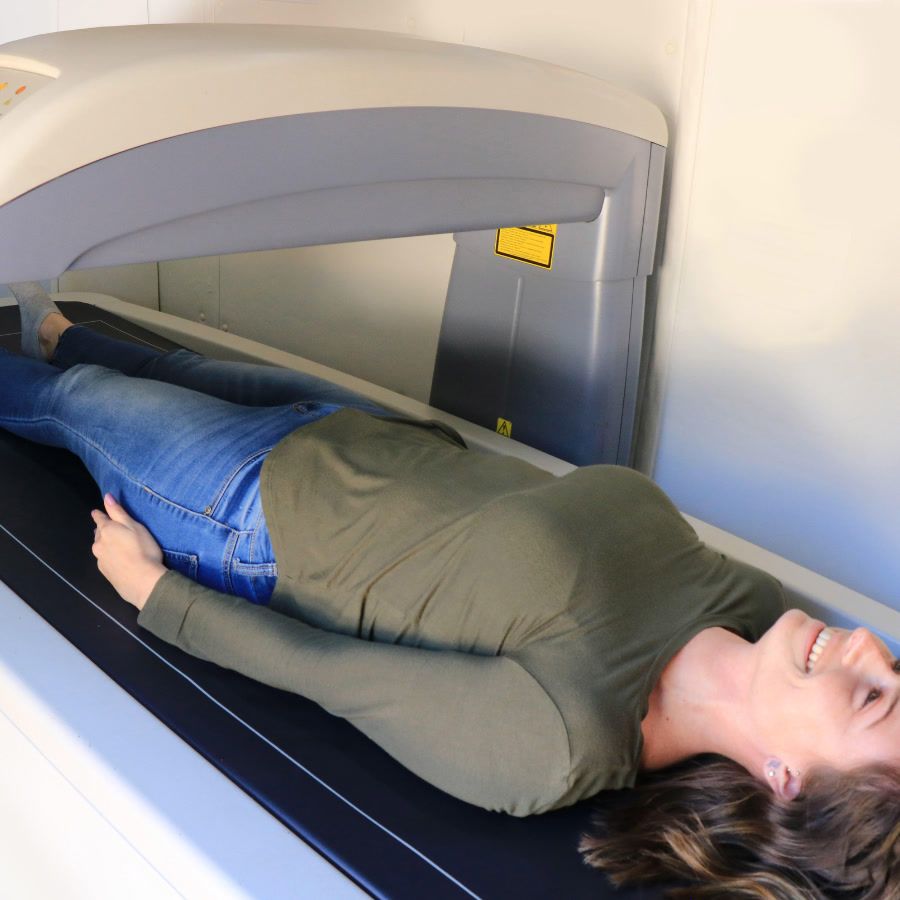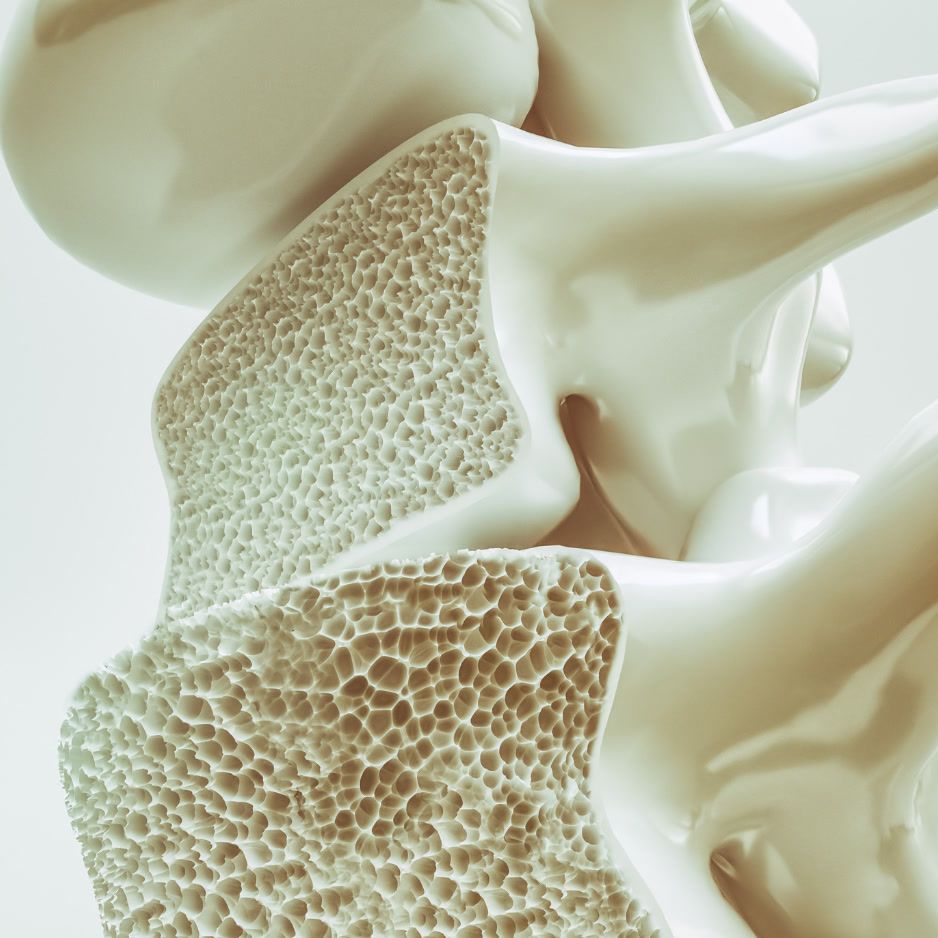The Complete Guide to Newbie Gains

The Complete Guide to Newbie Gains: DEXA-Backed Timeline, Physiology, and 12-Week Action Plan
New to lifting and hearing about “newbie gains” everywhere?
This guide breaks down what those rapid early increases in muscle and strength really are, how long they last, and—most importantly—how to maximize them. From physiology to a concrete 12-week plan, you’ll get evidence-based strategies backed by DEXA data so you can make every workout count.
At a Glance
| Quick Fact | Details |
|---|---|
| What are newbie gains? | A 6–12-month window of accelerated muscle and strength growth experienced by brand-new lifters. |
| Average muscle gain | Men: 15–25 lb (≈1–2 lb/mo); Women: 8–12 lb (≈0.7–1 lb/mo) in year one, assuming smart training and nutrition Legion Athletics. |
| Why they happen | Untrained muscles can see ~150–200 % spikes in muscle protein synthesis (MPS) that remain elevated for up to 48–72 h, vs <50 % in trained lifters Phillips et al., 1997. |
| When do they slow? | Noticeable taper after 6 months; plateau by 12 months as the repeated-bout effect kicks in Hone Health. |
| How to track progress | DEXA scans every 4–6 weeks deliver highly accurate lean-mass data—far more precise than scale weight or mirror checks BodySpec offers mobile and storefront locations. |
Table of Contents
- What Exactly Are Newbie Gains?
- The Physiological Basis of Newbie Gains
- How Long Do Newbie Gains Last?
- The 3 Pillars of Success: Training, Nutrition, and Recovery
- 12-Week Action Plan
- Tailored Tips for Different Beginner Profiles
- Sustaining Progress After the Initial Gains Phase
- Frequently Asked Questions
- Key Takeaways
What Exactly Are Newbie Gains?
“Newbie gains” refer to the rapid improvements in muscle size, strength, and body composition that almost every first-time lifter experiences during the first several months of consistent resistance training.
Why it matters: Taking full advantage of this period can dramatically accelerate physique changes and establish a solid foundation for future progress.
Pro Tip: Because muscle and fat can shift in opposite directions, scale weight alone can mislead. A DEXA scan reveals exactly how much of each pound is muscle, fat, or bone.
The Physiological Basis of Newbie Gains
Muscle Protein Synthesis (MPS) Surge
Beginner lifters can experience a 150–200 % rise in MPS after just one resistance-training session, and this heightened synthesis can persist for up to 48–72 hours—considerably longer than in trained athletes Phillips et al., 1997.
Neural Adaptations
The nervous system quickly learns to recruit more motor units, leading to steep strength gains even before visible muscle growth occurs.
Hormonal Response
Acute bouts of resistance exercise elicit larger spikes in anabolic hormones—testosterone, growth hormone, and IGF-1—in novices compared with trained lifters Kraemer & Ratamess 2005.
Satellite Cell Activation
Muscle stem cells fuse with fibers and add nuclei, increasing each fiber’s capacity to synthesize new protein and thus grow thicker.
Repeated-Bout Effect
As muscles adapt to familiar stress, workout-induced damage decreases, and the growth signal diminishes—explaining why gains slow over time.
How Long Do Newbie Gains Last?
Most evidence—and countless gym logs—place the peak newbie-gain window at 6 to 12 months. Growth velocity is highest in the first 8–12 weeks, then gradually decelerates as the body adapts. After about a year of consistent, well-structured training, gains continue—but at a fraction of the early-phase rate.
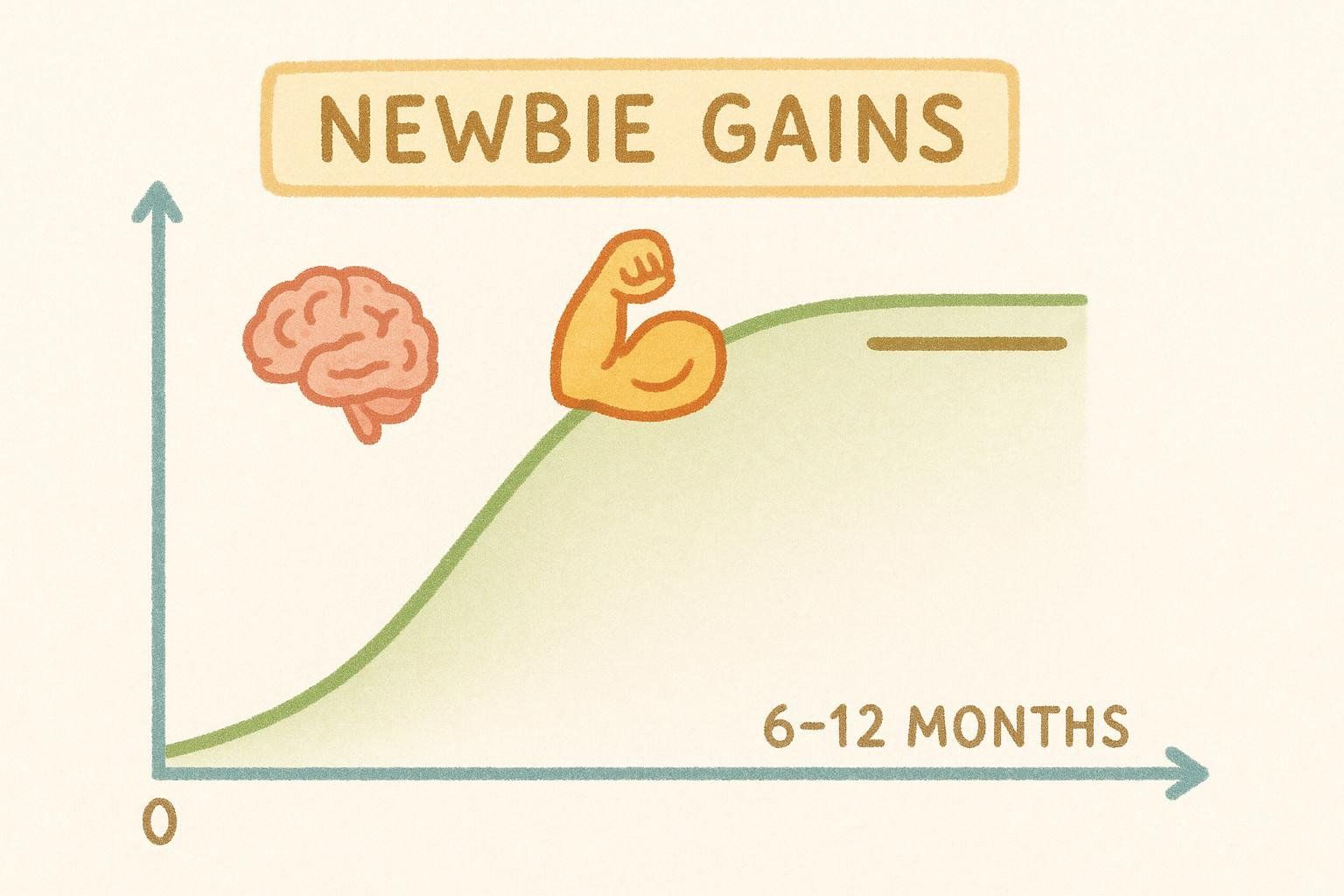
| Phase | Timeline | Observable Changes |
|---|---|---|
| Neurological | Weeks 1–3 | Rapid strength increases; improved coordination |
| Anabolic Surge | Weeks 3–12 | Noticeable muscle fullness; 2–4 lb muscle per month |
| Consolidation | Months 4–6 | Gains continue but at a reduced rate |
| Plateau | Months 6–12 | Progress tapers; more advanced programming required |
The 3 Pillars of Success: Training, Nutrition, and Recovery
1. Training
| Strategy | Why It Works |
|---|---|
| Progressive overload (add weight, reps, or sets weekly) | Maintains a robust growth signal as adaptation occurs |
| Compound focus (squats, deadlifts, presses, rows) | Engages multiple muscle groups, maximizing stimulus per session |
| 3–4 sessions/week | Within ACSM guidance of 2–3 days for novices and 3–4 days for intermediates, balancing workload and recovery ACSM Position Stand. |
| 2–3 sets × 6–12 reps | Hypertrophy-friendly range with concurrent strength gains |

Need structure? Check out our Strength Training for Beginners blueprint.
2. Nutrition
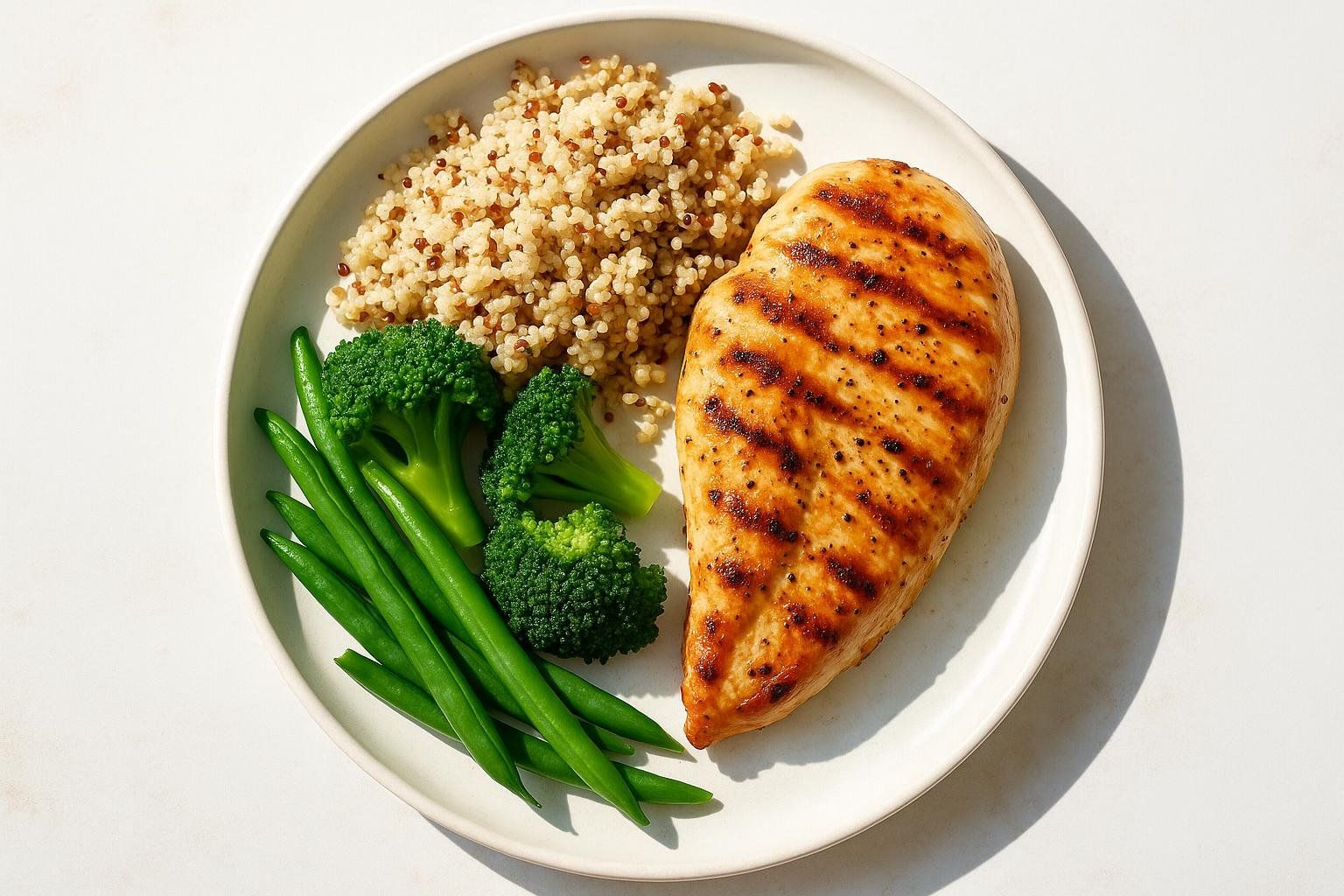
• Protein: Aim for 0.7–1 g per pound of body weight daily.
• Calories: Maintain roughly a 10 % surplus—use our Muscle Mass Calculator to set precise numbers.
• Carbohydrates: Replenish glycogen and keep cortisol in check.
• Micronutrients & hydration: Focus on whole foods; supplement to fill gaps.
More detail: Lean Bulk Essentials.
3. Recovery

| Habit | Minimum Target |
|---|---|
| Sleep | 7–9 hrs/night |
| Rest days | 1–2 per week; add light cardio or mobility work |
| Stress management | Breathing drills, walks, short meditations |
12-Week Action Plan
Bookmark this framework and check off each milestone.
- Weeks 1–4 — Foundation
• Master the big five lifts; film sets for form review.
• Complete baseline DEXA scan.
• Hit protein targets at least 5 days per week. - Weeks 5–8 — Progression
• Add ≈5 % weight or +1 rep per lift weekly.
• Schedule a second DEXA scan; aim for ≥2 lb lean-mass increase.
• Increase calories if body weight stalls for 14 days. - Weeks 9–12 — Consolidation
• Shift to an upper/lower split (4-day).
• Add isolation work for lagging muscles.
• Conduct third DEXA scan; decide to bulk, cut, or maintain based on data.
Tailored Tips for Different Beginner Profiles
If You’re Balancing Classes and a Tight Budget
• Use campus gyms (often free).
• Opt for budget protein: Greek yogurt, canned tuna, beans.
• Stick to a 3-day full-body routine around lectures.
If You’re a Naturally Skinny “Hardgainer”

• Embrace liquid calories—blend oats, honey, nut butter.
• Track intake for 2 weeks to ensure a surplus.
• Limit excess cardio; prioritize compound lifts.
If You’re Returning Post-Pregnancy
• Secure medical clearance first.
• Start with body-weight and band work; add weights over 4–6 weeks.
• Schedule 30–40 min sessions during childcare windows.
• Rebuild core and pelvic-floor stability before heavy lifting.
Sustaining Progress After the Initial Gains Phase
Once the rapid-growth period subsides, continued progress requires more strategy:
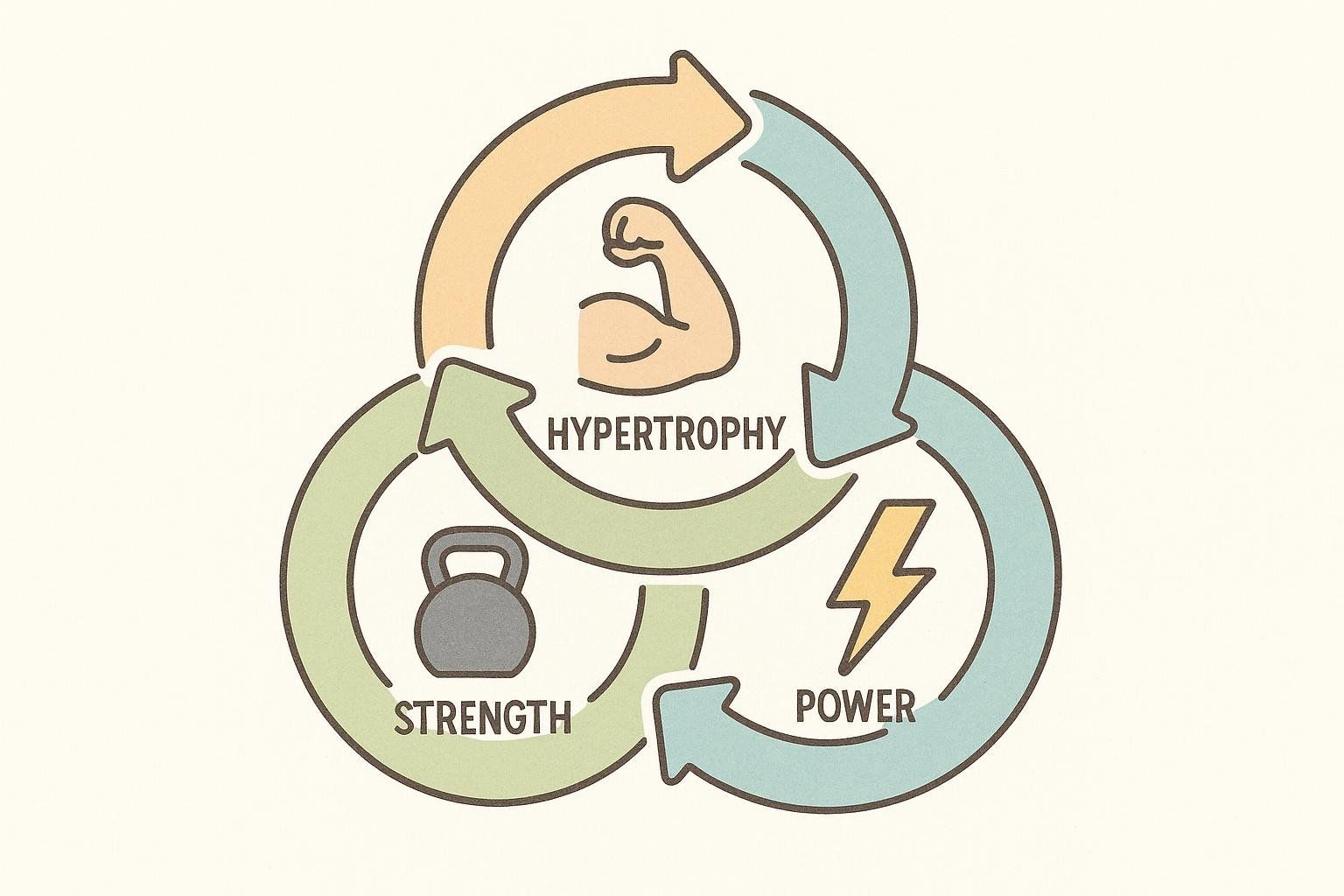
- Periodize your training—rotate strength, hypertrophy, and power phases.
- Track weekly volume per muscle group—target 10–15 hard sets.
- Alternate lean-bulk and cut cycles to manage body composition.
- Stay data-driven—quarterly DEXA scans catch trends the scale misses.
For more timelines, see How Long to See Gym Results?.
Frequently Asked Questions
How long do newbie gains last?
Most people enjoy accelerated results for 6–12 months, with the steepest improvements in the first 8–12 weeks before tapering.
How effective are newbie gains?
Very. Strength can jump 50 % or more on major lifts within three months, and muscle growth of 1–3 lb/month is common early on Hone Health.
What is the average gains for a newbie?
On average, men gain 15–25 lb of muscle and women gain 8–12 lb in year one when training, eating, and recovering appropriately Legion Athletics.
What is the 3-3-3 rule gym?
A time-efficient template: perform three circuits, each with three exercises, and repeat each circuit three times—often three days per week for a full-body session under 45 min SELF.
Can I lose fat and build muscle simultaneously?
Yes—beginners often achieve body recomposition when lifting, hitting protein targets, and maintaining a slight calorie deficit.
Do newbie gains disappear if I miss the window?
Sub-optimal habits can blunt progress, but fixing training, nutrition, and recovery can still yield significant gains—even after years of inconsistency Hone Health.
How often should I scan with DEXA?
Every 4–6 weeks during the first three months offers actionable feedback without over-spending.
Key Takeaways
• Newbie gains are the fastest muscle-building window—generally the first 6–12 months of structured training.
• Smart training, nutrition, and recovery maximize this phase.
• DEXA scans provide unmatched precision for tracking muscle and fat changes.
• A 12-week blueprint sets habits that pay off long term.
• After the honeymoon phase, periodized programming and regular data checks keep progress alive.
Ready to quantify your transformation? Dive into your personal data with a BodySpec DEXA scan and start measuring what matters.
